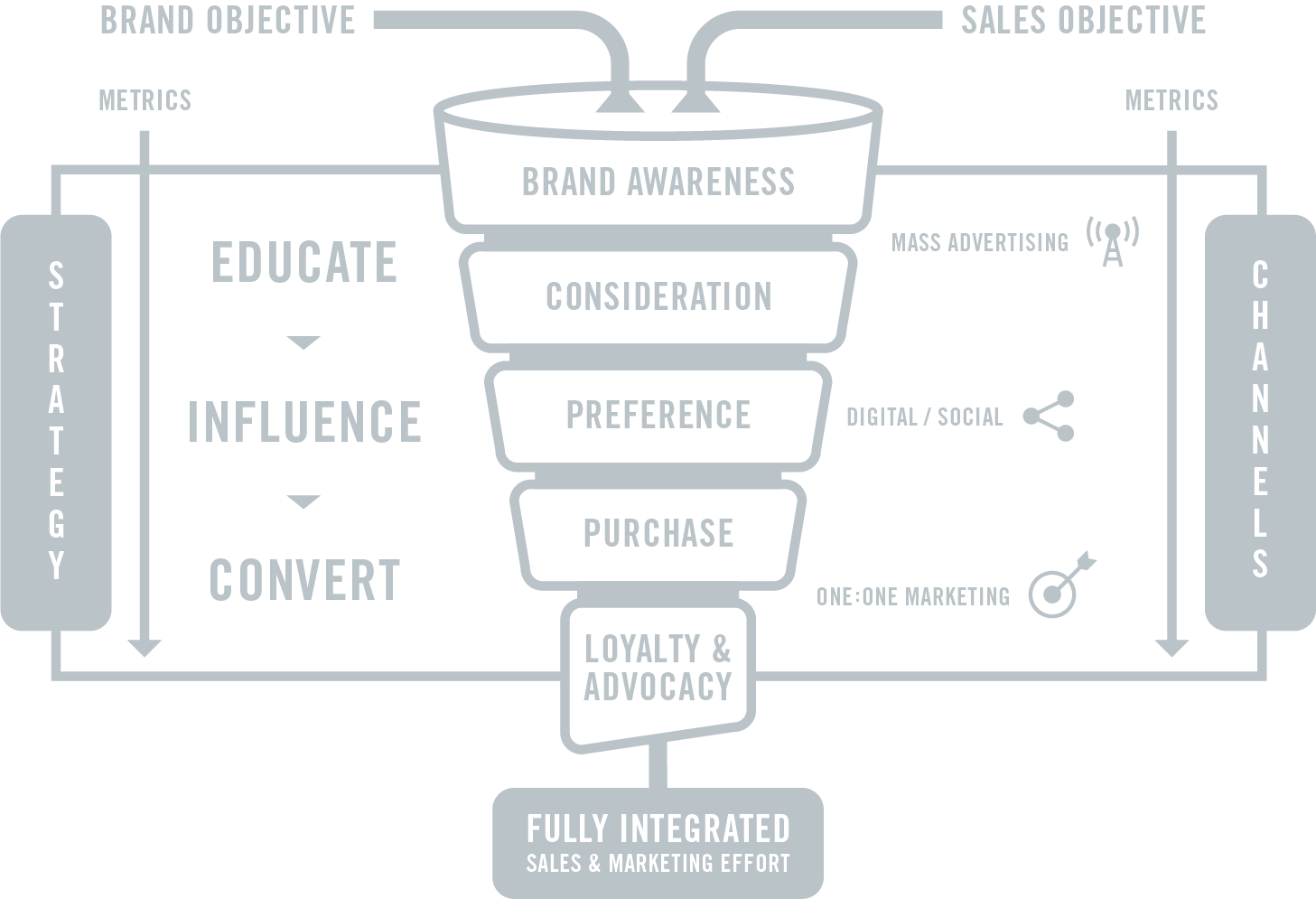Today, marketers and CMO’s are looking at the digital marketing landscape and heavily investing more and more ad dollars to reach audiences. Expectations are high for getting the results, data, metrics, marketing analytics, traffic, engagement, conversions and ROI, and marketing managers and CMO’s are being held accountable. And we believe as their partner, we should be held to the same standards.
According to a 2017 CMO survey, big organizational capability gaps identified by marketing leaders are highest in customer development and engagement and marketing analytics.
Today’s marketers want a fully integrated approach that takes customers through the buying journey from awareness, to consideration, to engagement, to purchase, to loyalty. That’s what Full-Funnel Marketing is all about.
The Full-Funnel Approach
Full-Funnel Marketing is a holistic approach that not only reaches an audience at the top of the funnel, but continues to follow the customer all the way down the funnel to purchase, engaging and nurturing customers each step of the way. Using the data available, we are able to tailor messages delivered throughout the entire purchase decision.

At the top of the funnel, our goal is to generate favorable brand awareness and help customers understand your brand’s unique position in the market. Through advertising both in digital and traditional landscapes, as well as social media and public relations, we communicate what makes a product or service unique and why your customers should care.
In the lower end of the funnel, it’s all about educating, influencing and engaging customers with your brand. We nurture customers along the way, by giving them the information and resources they need to make an informed purchase decision, while providing marketers/clients a highly targeted prospect list that are ready to convert and make the purchase of your brand.
Finally, it’s up to us to convert these customers into loyal customers and brand ambassadors through retention, loyalty programs and follow-up communications. These are the customers who will write favorable reviews and become advocates for the brand.
Why is it important?
Consumers are heavily influenced in their purchase decision by online reviews, recommendations, social content, etc. They have access to more information about a product or service at their fingertips during each phase of the purchase decision.
It’s critical that marketers use the Full-Funnel Marketing approach and reach customers through multiple platforms both early on in the buying process, and at each stage thereafter. Investing in brand awareness marketing in the upper funnel will keep your brand in the minds of customers even when they aren’t actively considering a purchase.
In a digital age that sees potential customers researching products and brands long before making first contact, it’s no longer enough for marketers to simply focus on consumer awareness of brands and products available to them. Effective marketing in today’s world follows the right customer with the right messaging from awareness to consideration all the way down to purchase decision and thereafter. That’s the Full-Funnel Marketing approach.
Check out the video below and download a free copy of the Full Funnel Marketing Guide.





